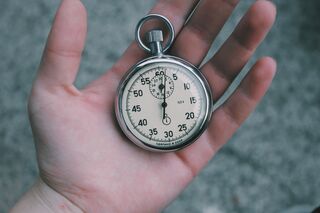Heuristics
Decisions, Decisions: How We Make Choices Every Day
Do we use past experience or present information to make choices?
Posted November 30, 2021 Reviewed by Devon Frye
Key points
- Sometimes, weighing all possible decision options overwhelms our cognitive resources.
- Heuristics help us to make decisions without having to consider all possible outcomes.
- Heuristics can also lead to bias and errors in decision-making.
- The use of heuristics in older adulthood can be helpful when making decisions because they don’t require as many cognitive resources.
Every day we are faced with innumerable decisions. Sometimes, our choices are difficult and carry considerable weight for our future: Should I go away to school or stay near home? Am I ready to get married and start a family? Should I leave my job and start a new career? Other times, our choices are small and relatively inconsequential: Should I wear boots or sneakers? Should I bring my lunch or purchase lunch in the cafeteria? Although we would like to think that we always approach our decisions rationally—weighing all of our options and considering our past experiences with each—doing so would quickly overwhelm our cognitive resources (Simon, 1955).

How We Make Daily Decisions
In our day-to-day lives, we often use short-cuts known as “heuristics” to help us make decisions without having to consider all possible outcomes. Heuristics help us to focus on the more important aspects of a problem or situation, more quickly leading us to the appropriate conclusion (Gigerenzer & Brighton, 2009). For example, the availability heuristic describes our tendency to rely on information from the most readily available examples of particular events or instances (Tversky & Kahneman, 1974). Doing so allows us to make decisions using the most salient examples of an option rather than thinking about every possible instance.
Although these heuristics are often helpful in speeding up simple choices, they are an imperfect solution to problem-solving and can also lead to biases and errors (Tversky & Kahneman, 1974). For example, that availability heuristic may make us think of flying as more dangerous than it really is, because we recall the salient examples of plane crashes covered by the media rather than the many successful flights that occur on a daily basis. In other words, using heuristics can cause us to focus on the wrong information (e.g., sensational reports of crashes) and ignore critical facts (e.g., the number of successful flights).
These heuristics can influence not only how we judge events, but also how we judge people. Mental short-cuts are thought to be at the root of many discriminatory practices and held stereotypes (Imtiaz, 2020). Heuristics may also interfere with our ability to think logically about complex issues of morality and politics (Sunstein, 2005).

Of course, not everyone approaches decisions in the same way. How we decide between known and unknown options can be influenced by environmental, individual, and social factors (Mehlhorn et al., 2015). For instance, under time pressure (perhaps we have only a few hours to decide whether to accept a job) we are more likely to rely on heuristics and to avoid more elaborate weighing of pros and cons.
How Decision-Making Changes Over Time
This balance also changes as we get older. As we age, we shift from a mindset of prioritizing new and novel options to one where we know the options and the reward value of each (Spreng & Turner, in press). Focusing on known options reduces the use of cognitive resources, as it doesn’t require us to flexibly respond to unexpected outcomes. This is helpful as we get older, because the cognitive load we can carry becomes lower.
This shift is also consistent with shifts in other types of prioritization with aging: As we get older, we begin to focus more on cultivating existing roles and relationships and less on exploring new experiences. Finally, age brings with it considerable gains in experience and prior knowledge, which provides increased certainty in the potential outcomes of known options.
As we highlight here, using heuristics to make decisions can sometimes be beneficial because they allow us to respond to problems quickly. However, these heuristics are subject to bias, reducing our acknowledgment of all relevant information during the time of our decisions. Sometimes it can be helpful to slow down and consider whether our decision-making is based on a heuristic response, or whether we are considering all of the facts of a given situation.
References
Gigerenzer, G., & Brighton, H. (2009). Homo heuristicus: why biased minds make better inferences. Topics in Cognitive Science, 1, 107–143.
Imtiaz, F. (2020, July 17). The dark side of mental shortcuts: How heuristics can foster stereotypes in the workplace. Engage TU. Retrieved October 28, 2021, from https://www.engagetu.com/2020/01/28/heuristics-and-workplace-bias/.
Mehhorn, K., Newell, B.R., Todd, P.M., Lee, M.D., Morgan, K., Braithwaite, V.A., Hausmann, D., Fiedler K., & Gonzalez, C. (2015). Unpacking the exploration-exploitation tradeoff: A synthesis of human and animal literatures. Decision, 2, 191-215.
Simon, H.A. (1955). A behavioral model of rational choice. The Quarterly Journal of Economics, 69, 99-118.
Spreng, R.N. & Turner, G.R. (in press). From exploration to exploitation: A shifting mental mode in late life development. Trends in Cognitive Sciences, https://doi.org/10.1016/j.tics.2021.09.001.
Sunstein C. R. (2005). Moral heuristics. The Behavioral and brain sciences, 28(4), 531–573.
Tversky, A. & Kahneman, D. (1974). Judgement under uncertainty: Heuristics and biases. Science, 185, 1124-1131.


